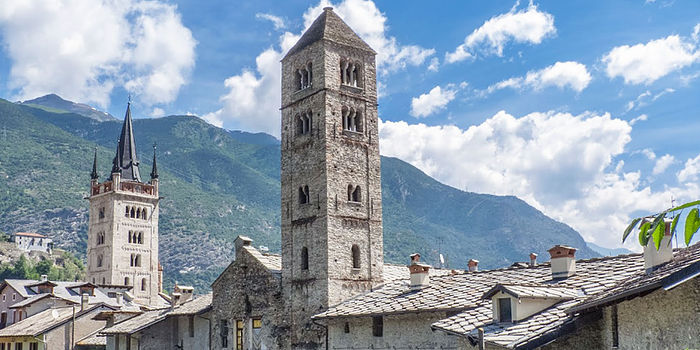One of our cherished gifts among us Daughters of St. Paul is our name! Sometimes when I’ve said I’m a Daughter of St. Paul, people will joke: “I didn’t know Saint Paul had daughters!” or “Saint Paul must be old if he still has daughters!” But the story of how we became connected to Saint Paul is actually very moving.
From the beginning of the foundation, of the small community of women who came together to be apostles of the good press, Blessed James Alberione had chosen Saint Paul as the protector his new family of apostles. In 1918, just three years after the first young women and Teresa Merlo (who would become Mother Thecla) had come together to follow the young founder, Bishop Giuseppe Castelli of the Alpine diocese of Susa asked Alberione if he would send this small group of women to his diocese to help him resume the publication of the diocesan weekly La Valsusa. Alberione saw this as an important moment for the growth of the young community as they began their mission. They had been sewing shirts for the Italian soldiers in the first World War, and had just begun to learn the art of printing.
Only one of the young women knew how to set type, and none of them knew much about layout! Months before, Clelia Calliano, one of the first women to join the followers of Alberione and the strongest among them, had died of the Spanish flu. But when Alberione told the women about the request, even putting it in its most discouraging light, Teresa Merlo did not hesitate. She replied for everyone, “Tell the bishop we will accept.” And that’s the spirit that has characterized the mission of our congregation ever since.

The sisters arrived in the small northern Italian town of Susa in December of 1918 and, within a month of their arrival—against all odds—the first copies of La Valsusa were distributed. Even though only 500 copies were printed, the diocese had its own voice again, a source of pride for everyone. The townsfolk quickly took the young women into their own hearts. Though they had no distinctive dress, people considered them to be a new religious family, and quickly came to recognize them as they saw them on the streets going from their house to the rooms that housed the printing press, from the church down the street where they prayed daily to the small bookstore the sisters had re-opened. And, in this store, they set up a large painting of the Apostle Paul–by which they came to be known.
This is the door to the building that was the typography of the first Daughters of St. Paul in Susa in 1919.

On a November night later that year, fire swept through their living quarters, destroying most of the furniture, yet none of the women was injured. Immediate assistance was offered by the townsfolk for anything they might need, with families even offering to take them into their homes. The sisters considered their safety a sign of the extraordinary protection of Saint Paul. Upon their arrival in Susa, the people had called the women the Daughters of Alba and the sisters of the Good Press. But now they were spontaneously called the Daughters of Saint Paul…and that became our name! In a letter two years later, James Alberione indicated this when he wrote, “To the excellent daughters of St. Paul.”
The sisters experience in Susa was their first missionary journey, and in that small Italian town the foundation was laid for a community of women religious who would preach with the press, dedicating their lives entirely to the spread of the Gospel. It was there that their love and trust in the great apostle Saint Paul grew and became so evident that the people themselves gave the young women in the new community their name. In the decree of canonical approval issued in March 1929, the name became official: Pious Society of the Daughters of St. Paul.
From the notes of M. Teresa Raballo, one of the sisters of the first hour, we read these words from Blessed James Alberione: “The Lord has destined Saint Paul to be our protector, guide, and model. He is entrusted with obtaining graces for us and all that we need. We must have recourse to him, and seek to imitate his example in imitating Christ.”
Sr. Kathryn James, FSP
